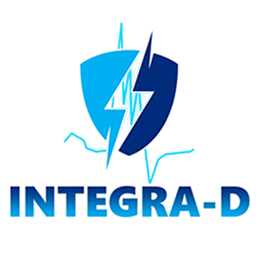PATIENTS
About INTEGRA-D
The OPTIMIZER® Integra CCM-DTM System, also known as a “Cardiac Contractility Modulation – Defibrillator,” is an investigational device system that combines CCM® therapy and ICD therapy into one device. This research study is designed to determine if the OPTIMIZER® Integra CCM-DTM System can effectively defibrillate (shock the heart to restore a normal rhythm pattern) and treat episodes of ventricular tachycardia/ventricular fibrillation (VT/VF) should any occur. This is a single-arm, prospective, multicenter study of 300 subjects. There will be 75 study centers in the United States.

What Is Heart Failure?
Heart failure is a condition in which the heart cannot pump enough blood to meet the body’s needs. Heart failure symptoms may include the following:
- Shortness of breath (SOB) doing everyday activities
- SOB during rest or while lying flat
- Fatigue and tiredness
- Dizziness, confusion, sadness, or depression
- Swelling in lower extremities
- Weight gain
- Abdominal discomfort or swelling
- Little or no appetite
Currently, there is a device called the OPTIMIZER® System that delivers cardiac contractility modulation therapy approved for use in the United States and many other counties around the world to help patients like you feel better, improve your ability to perform daily activities, and experience a better quality of life.
What Is Sudden Cardiac Arrest?
During a sudden cardiac arrest episode, the ventricles (main pumping chambers) of your heart are quivering rapidly (fibrillating) due to an “electrical storm” in the heart and no longer squeezing effectively to pump blood through your body. Your chances of survival are low (1 in 20) unless a medical device called a defibrillator stops the quivering by delivering a carefully controlled large shock of energy to the heart. The risk of sudden cardiac arrest is increased when the left ventricle is weak (as measured by a reduced ejection fraction (EF)). Traditionally, patients at risk for sudden cardiac arrest are indicated for an implantable cardioverter defibrillator (ICD). While ICDs can save your life, they do not have the ability to help improve or reduce the symptoms of heart failure.
Why Participate?
Currently, patients who have heart failure and are at risk of cardiac arrest would need two devices (the OPTIMIZER® System and an ICD) implanted to treat both conditions.
If you are eligible for the study, you will receive both therapies (CCM® and ICD) with only one implanted device system with two electric wires (leads).
Most ICDs have an average battery life of 5 to 10 years. The OPTIMIZER® Integra CCM-DTM has an expected battery life of 20 years (if the charging protocol is followed).
You can still receive all the traditional medical therapy you would have from your doctor in addition to being in the trial.
Patients in clinical trials have historically done better than their non-study counterparts.
Are You Eligible for the Study?
Are you 18 years or older?
Do you have symptomatic heart failure despite being on medication?
Is your EF ≤ 40%?
Has your doctor recommended an implantable ICD?
Device Description

If you are enrolled, you will receive the OPTIMIZER® Integra CCM-DTM System, which includes:
- The CCM-DTM implantable pulse generator (IPG) delivers CCM® therapy, treats sustained ventricular tachyarrhythmias, and generates CCM® therapy signals across two electric wires (leads). There are two batteries in the IPG: (1) the rechargeable battery used for CCM® therapy delivery and (2) the non-rechargeable battery used to treat sustained ventricular tachyarrhythmias.
- the CCM-DTM IPG charger: charges the rechargeable battery used for CCM® therapy delivery
Duration of Participation
(1) Screening and baseline evaluation period
Certain tests and assessments will be done to see whether you are eligible to take part in the study. If you are eligible, you will be scheduled for the OPTIMIZER® Integra CCM-DTM implant procedure.
(2) OPTIMIZER® Integra CCM-DTM implantation procedure
a. 1/3 of subjects will have to undergo a defibrillation efficacy (DE) test at time of implant. To perform this test, your heart will be intentionally sped up (while you are sedated) into an arrhythmia called ventricular fibrillation. The device will be allowed to rapidly analyze the arrhythmia and shock your heart back into a normal rhythm. In the unlikely event that the device does not shock your heart back into a normal rhythm, an external defibrillator will be used to do so. 1
(3) Follow-up period (IDE study)
This will take two years to complete. There will be device checks at the following time points post-implant procedure: two weeks, one month (if you underwent DE testing), six months, and every six months until two years.
(4) Long-term follow-up period
All subjects will be followed every six months after their two-year visit until the FDA has completed their review of the data collected in (3) Follow-up period (IDE study).
1 Although extremely uncommon, potential major complications of such testing include stroke, blood clot to the lungs, or cardiac shock requiring CPR, which all together happen in 0.1-0.4% (one in one thousand to four in one thousand) of cases. Death occurs in 0.01-0.06% (one in ten thousand to six in ten thousand) of cases.

© 2025 Impulse Dynamics Terms of Use | Data Protection | Vulnerability Disclosure | Terms and Conditions | Privacy Policy
